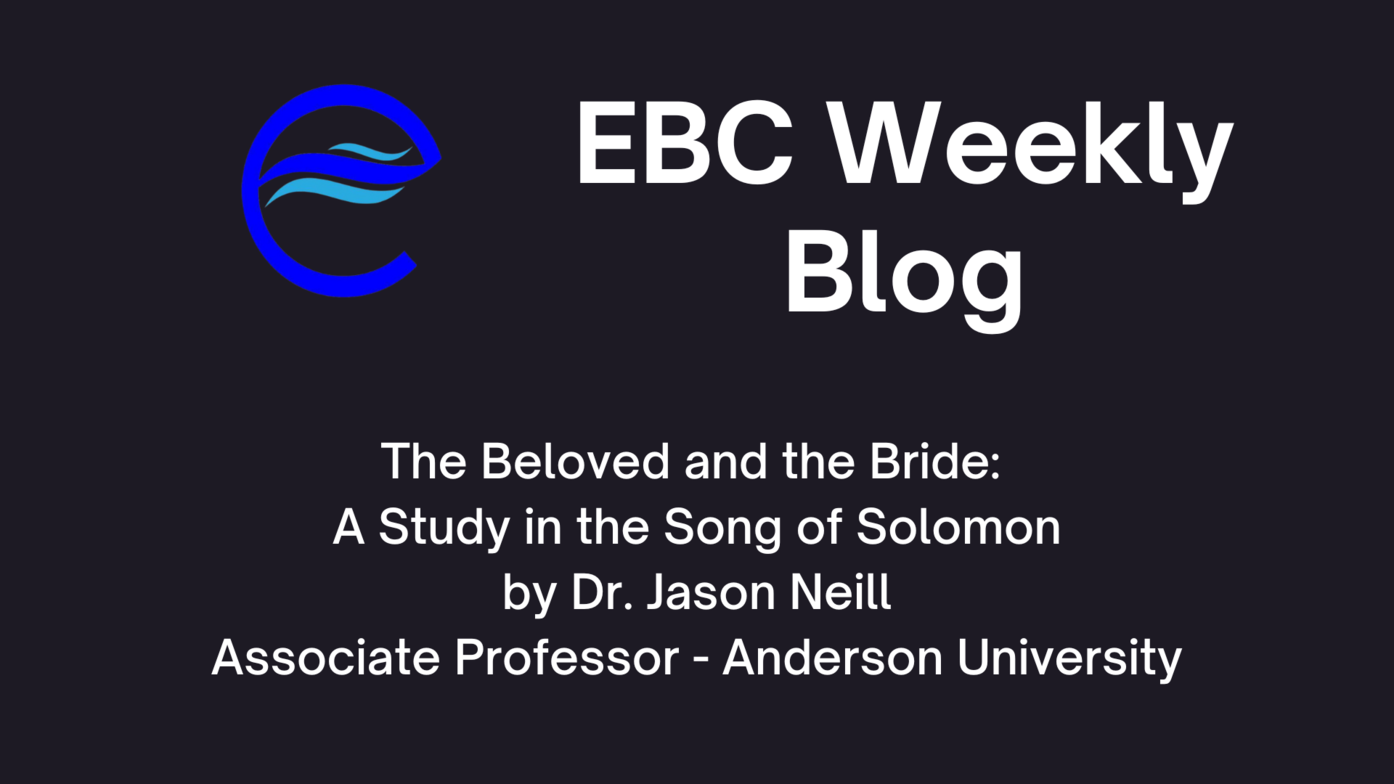The Beloved and the Bride: A Study in the Song of Solomon


July 21, 2025
The Beloved and the Bride: A Study in the Song of Solomon
by Jason Neill
Scripture reading: Song of Solomon 1-8
During my first semester of seminary, I enrolled in "Bible Study Methods and Hermeneutics," taught by Professor Howard Hendricks. He was a truly captivating teacher. His stories kept me on the edge of my seat, and his spiritual insights into studying the biblical text were simply mesmerizing. It's no exaggeration to say the principles I learned in his class unlocked the Scriptures for me; I still use them to this day. Beyond those lessons, I remember one lecture where I think he was discussing Ephesians 5 concerning the Christian home (see 5:21-33). He told us, as a class, "if you aren't married, get married." In fact, he was such a firm believer in Christian marriage and how it had positively changed his life that he asserted anyone in the class would automatically receive an "A" for the course if they got married during the semester. I don’t think anyone in my class was married that semester, but it left an impression.
This focus on the lived reality of faith and relationships, sparked by Professor Hendricks, provided a fascinating lens through which to approach a biblical book often debated and misunderstood: the Song of Solomon. There are two approaches to this biblical book. First, the allegorical stance says this poem is about Christ, symbolically portrayed as the king, and the love he has for his church, symbolically portrayed as the woman. Second, the literal stance says this poem is about romantic love between a man and woman who experience courtship and eventually marry, which is my view. I take this view primarily because the church was not in existence during the Old Testament; it didn’t begin as an entity until Acts 2, inaugurated by the permanent indwelling of the Holy Spirit within believers.
There are four main characters in the book: the king (traditionally understood as Solomon), the woman, her brothers, and the daughters of Jerusalem. One scholar, Dr. Paul Benware, outlines the book as follows: Courtship: Preparation for Marriage (1:1-3:5), Consummation: Fulfillment Within Marriage (3:6-5:1), and Commitment: Realities of Marriage (5:2-8:14) (taken from his volume, Survey of the Old Testament). The poem describes how a relationship forms; love is cultivated and eventually leads to marriage. Within the sections concerning marital fulfillment, the reader will find explicit language pertaining to erotic love. This should not come as a surprise, since God isn’t against sex within its proper boundary—the marital relationship—and he created us and instituted the marital relationship (see Genesis 1-2).
Authorship and Date: Jewish tradition and evangelical scholarship attribute the book to Solomon. He is mentioned in 1:1, 5; 3:7, 9, 11; and 8:11, 12. He was called both a king (see 1:4, 12; 3:9, 11; 7:5) and shepherd (see 1:7-8; 2:16; 6:2-3) in the book. Leaders were often referred to as shepherds (see Jeremiah 23; Ezekiel 34). The book was most likely written during Solomon’s earlier years as king, around 965-960 B.C.
Jesus in Song of Solomon & Its Application:
Israel is called the bride of Yahweh (see Isaiah 54:5-6; Jeremiah 2:2; Ezekiel 16:8-14; Hosea 2:16-20) while the church is called the bride of Christ in the New Testament (see 2 Corinthians 11:2; Ephesians 5:23-25; Revelation 19:7-9; 21:9). One of my favorite Christian authors, Warren W. Wiersbe, makes this remark regarding how the book can be applied to a modern audience: “The presence of immature people in a congregation would make it difficult to preach from this book, but a series of lessons from the Song of Solomon would be very helpful to a class of engaged couples or newlyweds. The book would be ideal as a basis for premarital counseling.” I concur with his assessment. Engaged couples and newlyweds would benefit from knowing that God doesn’t shy away from the most intimate matters of romantic love but instead encourages it.
For more on how to study the Bible, I recommend the following resources:
Living by the Book: The Art and Science of Reading the Bible, Revised and Updated by Howard Hendricks and William Hendricks and The New Joy of Discovery in Bible Study by Oletta Wald.